If you want to learn how to grow your business through more effective marketing and branding, then “Building a StoryBrand” by Donald Miller is a must-read. This book explains powerful principles of storytelling to help businesses create clear, compelling narratives that resonate with customers.
This book is all about telling a story where your customer is the hero. Contrary to popular belief, branding is NOT about telling your company’s story better. (Because your customer doesn’t care about your company, they just want to know how you will make their life better!)
Whether you’re looking to improve your marketing, engage your audience, or drive sales, this book provides an essential framework you need to know. In the following summary, we’ll cover the key takeaways from each chapter, so you can understand and start applying these strategies today.
Another popular recent book is The 1-Page Marketing Plan by Allan Dib. It says “the best kept secret of the rich” is leverage, which means focusing on those points in your business where a small change can make a big difference to results.
That author wrote, “By far the biggest leverage point in any business is marketing. If you get 10% better at marketing, this can have an exponential or multiplying effect on your bottom line.” For example, if you can make the homepage of your website convert not 1% of visitors into buyers, but 2%, then you’ve just doubled your revenue.
Read our summary of the 1-Page Marketing Plan (Coming Soon)
📖 Summary by Chapter: Every chapter of “Building a StoryBrand” explained in 5 minutes

First, you’ll get a quick overview of the key concepts and lessons you should know from each chapter of the book.
Chapter 1 Summary
- Two Marketing Mistakes:
- Ignoring Customer Needs: Businesses often fail to focus on what helps customers survive and thrive (e.g., eat, drink, find a mate, build a tribe). People tune out when you start talking about things irrelevant to their needs, like your company history.
- Lack of Clarity: Complex messages force customers to expend too much effort to understand what you can do for them, causing them to lose interest. The solution? Keep it super-simple. The Grunt Test means that a customer should be able to look at your website for 5 seconds and be able to understand what you sell, what it will do for them, and how to buy it.
- Story Creates Compelling Marketing: Storytelling makes your message easy to understand and more engaging. To use story in your business, you must: Position your customer as the hero, clearly outline their desires and challenges, and show how your product or service leads to their success.
Chapter 2 Summary
- Storytelling Cuts Through Noise: In modern marketing, noise and distraction are major obstacles. Stories are one of the only things that can hold people’s attention for hours. At first, Steve Jobs ran ads for Apple computers that focused on technical details and didn’t connect with most people. After co-founding Pixar, he learned the power of storytelling and making the customer the hero, leading to iconic campaigns like “Think Different.”
- Three Crucial Questions: In both story and business, we must answer three key questions: What does the hero (customer) want? What is stopping them from getting it? What will life look like if they succeed or fail? For example, the sales of a photography course quadrupled when the sales page dropped technical jargon and focused on photography could help parents strengthen family bonds.
Chapter 3 Summary
- Seven Basic Story Elements: The most compelling and memorable stories, like Star Wars, follow seven basic elements. Stories that deviate from this pattern do not resonate as widely. In the same way, your brand’s story will contain these seven points:
- Character: Position the customer as the hero, not your brand. At the center of every story is a hero that wants something.
- Problem: Every hero has obstacles to getting what they want. The more you talk about your customer’s problems, the more interested they’ll be.
- Guide: Position your brand as the guide, not another hero. Every effective guide must show empathy and authority. If your customer is Luke Skywalker, then you’re Yoda.
- Plan: The guide provides a plan or direction for the hero (or customer) to follow.
- Call to Action: In a story, people don’t simply decide to change, it is always some outside event or person to call them to action.
- Avoid Failure: Emphasize what is at stake and what the customer stands to lose by not taking action.
- Success: Paint a picture of the positive transformation the customer will experience by using your product or service.
The next few chapters go into more detail on building the 7 parts of your StoryBrand.
Chapter 4 Summary
- Your Customer as Main Character: Position your customer as the hero of the story. Keep an image of your typical customer in mind throughout creating your marketing.
- Focus on One Desire: Identify and highlight the single most important thing your customer wants to create a clear and engaging message. The main question in your customer’s mind is “Where are you taking me?” They couldn’t care less about hearing your company’s history.
- Keep it Relevant to Survival: Ensure the desire your brand fulfills is directly related to their survival needs, such as saving money, saving time, building relationships, gaining status, making money, giving back, or finding meaning.
Chapter 5 Summary
- Your Customer’s Problem: Every story revolves around someone trying to solve a problem. The more you talk about your customer’s problem, the more they will listen.
- Focus on a Villain: Great stories have a villain working against the hero. In business, you can personify an abstract problem. For example, a productivity app can make the concept of distractions their villain.
- Three Types of Problems: External, internal, and philosophical. The most important type is internal problems, which are inner frustrations customer experience due to external issues. Apple succeeded by focusing on reducing the internal problem of people feeling intimidated by computers.
If you want to learn advertising and copywriting, a highly-recommended book is Scientific Advertising by Claude Hopkins. Despite being written decades ago, it’s still relevant today. The key idea is that marketing success comes from putting yourself in your customer’s shoes so you can understand who they are and what they need.
Hopkins wrote, “Don’t think of people in the mass. That gives you a blurred view. Think of a typical individual, man or woman, who is likely to want what you sell. Don’t try to be amusing. […] Do just what you think a good salesman should do with a half-sold person before him.”
Read our summary of Scientific Advertising by Claude Hopkins
Chapter 6 Summary
- Your Brand is the Guide: Position your brand as the guide, not the hero. The customer is the hero of the story, and your role is to help them succeed. Compelling stories have a guide that helps the hero at the right moment, like Yoda with Luke or Gandalf with Frodo in The Lord of the Rings.
- Two Parts of a Good Guide:
- Empathy: Show that you understand and care about the customer’s problem.
- Authority: Demonstrate your competence and experience in solving their problem. (Through testimonials, statistics, awards, and logos from well-known clients.)
Chapter 7 Summary
- Give Them a Plan: As the guide, provide a clear plan to help the customer solve their problem. This plan acts like stepping stones across a rushing river. In stories, the guide provides a plan, like Gandalf telling Frodo to go to Mordor to destroy the ring.
- Two Types of Plans:
- Process Plan: Outlines the steps to do business with you, reducing confusion and providing clarity, especially for expensive services.
- Agreement Plan: Addresses and alleviates customer fears by listing guarantees or agreements, such as Carmax’s no-haggle policy.
Chapter 8 Summary
- Provide a Clear Call to Action: In stories, characters need a bold call to action to change. Similarly, your marketing must clearly and boldly guide customers on what to do next. Use prominent, contrasting buttons like “Buy Now” on your website.
- Two Types of Call to Action:
- Direct: Encourages immediate purchase actions such as “Buy Now,” “Schedule Appointment,” or “Add to Cart.”
- Transitional: Provides a low-risk way for your customer to engage, like “Get Free Report,” “Sign Up for Webinar,” or “Free Sample or Trial.” These actions build trust and lead to future purchases. Donald Miller doubled revenue offering a free PDF on his website called “5 Things Your Website Should Include” with a pitch for his services at the end.
Chapter 9, 10, and 11 Summary
- Highlight What They Stand to Lose. To make your story compelling, there need to be stakes. In marketing, clearly communicate the negative consequences of not using your product. People are more motivated by the fear of loss than the prospect of gain, a psychological principle called “Loss Aversion” explained in the book “Thinking, Fast and Slow” by Daniel Kahneman—read our summary.
- Paint a Picture of Future Success. Show customers exactly how your product or service will improve their lives. Be specific and clear about the benefits. Use images of happy customers and focus on desirable outcomes like increased status, reduced anxiety, and self-realization.
- Show How You Can Aid Their Transformation: Everyone wants to transform into someone better, even if “better” simply means becoming more self-accepting. What is your customer’s aspirational identity—how do they want other people to see them? Nike connects with people who are inspired by great athletes, while Dove connects with a message of unconditional self-love. Show how your brand can help your customer become their best self.
Chapter 12 Summary
- Creating an Effective Website: It’s all about offering something your customers really want and proving you can deliver it. Key tips include: (1) Clearly state what you do at the top of your home page, (2) Place prominent buttons in the center of the page and the top right corner, (3) Showcase happy customers using your product, and (4) Use as few words as possible because today people skim more than read online text.
Chapter 13 Summary
- StoryBrand for Company Culture: Mission statements are generally ignored. Instead, you can increase employee engagement in a company by using storytelling. Treat each employee as the hero, with your company being their guide. Show how the company can help them achieve their personal and professional goals, to get everyone working towards a common mission.
According to Building a StoryBrand, the first big mistake brands make is not highlighting the benefits of their offer, which is defined as what helps your customer to…
Survive and thrive
Feel understood
Be the main character
Enjoy their life
Now, let’s move on to a deep dive into the best practical ideas and key takeaways in this book…
📢 1. Clarify Your Message: Simplify your brand’s message to ensure customers understand what you offer within 5 seconds.
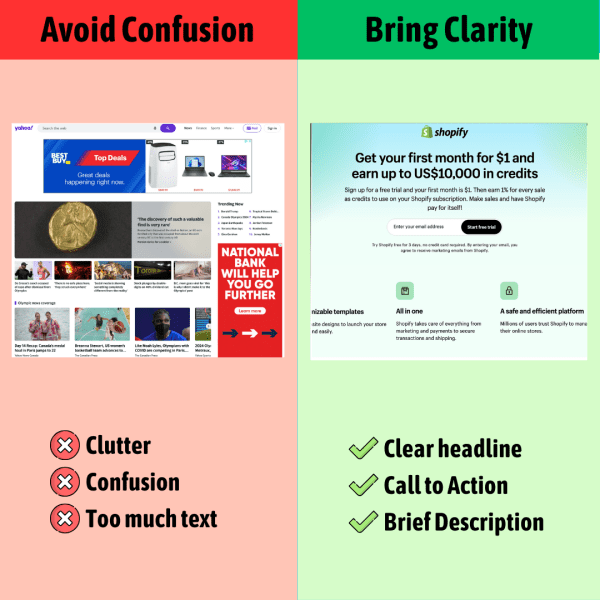
Simplifying your brand’s message is crucial in our age of distraction and low attention spans. Your message should be clear and concise, allowing customers to understand what you offer within five seconds.
In today’s fast-paced digital world, you have only a few seconds to make an impression on your potential customers. Simplifying your brand’s message is essential because understanding complex explanations takes mental effort, which consumes calories.
Our brains are wired to conserve energy, so if your message is too complicated, customers are likely to disengage and click away.
Instead, imagine a well-designed webpage with a bold headline summarizing the core benefit of your product or service, a brief description, and a clear call to action. For example, a productivity app might have a headline that says, “Boost Your Efficiency,” followed by, “Organize your tasks effortlessly with our intuitive app,” and a single button that says, “Start Free Trial.”
The simplicity of this message captures attention and communicates value instantly. When customers know exactly what you offer and how it benefits them, they are more likely to stay, explore, and eventually make a purchase.
To ensure your message is clear, use the “5-Second Test.” Show your website or marketing material to someone for just five seconds and ask them to describe what your business offers, what it will do for them, and how to buy it. If they can’t, it’s time to simplify your message.
The book “Made to Stick” by Chip and Dan Heath explores concepts like the “Curse of Knowledge,” where once we know something, we find it hard to imagine not knowing it. This makes it difficult to communicate our business message clearly because we forget what it’s like to be uninformed.
To overcome the “Curse of Knowledge,” the authors recommend simplifying your business message into a 1-Line Hollywood Pitch. Before a movie is made, Hollywood writers pitch their idea by distilling it into a short line, removing any details that aren’t absolutely necessary.
They often tap into existing knowledge to make a complicated idea immediately understandable. For example, describing The Mandalorian series as “a Western movie in space” makes people get it right away. Or a new app can be described as “Airbnb for cars.”
To ensure customers understand your offer within five seconds, which change is best?
Detailed company history on your homepage
Bold headline summarizing core benefit of your product
Multiple large images of your team
Paragraphs using technical language to describe your service
🦸 2. Customer as Hero: Position the customer as the hero of the story, with your brand acting as the guide.
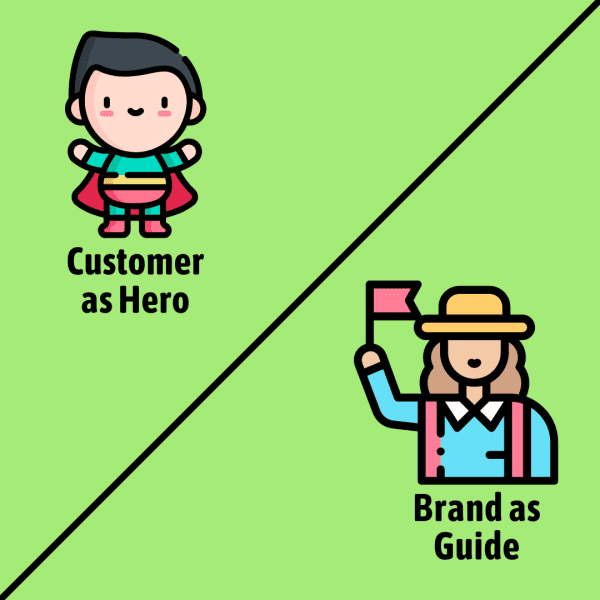
Most brands make the mistake positioning themselves or their founder as the hero of your story. Instead, position your customer as the hero on a quest to solve their problem. You are their guide, helping them with empathy and authority to reach success.
Think of popular stories where the hero faces challenges and receives help from a wise guide. For example, in “The Lord of the Rings,” Frodo is the hero, and Gandalf is the guide who provides wisdom and support. Similarly, in “Star Wars,” Luke Skywalker is the hero, and Yoda is the guide who trains him to harness his potential. These narratives are compelling because we put ourself in the shoes of the hero and the guide usually becomes a trusted, beloved character in the journey.
In marketing, it’s crucial to position your customer as the hero of the story and your brand as the guide that helps them achieve their goals. This shift in perspective focuses on the customer’s needs and aspirations, making them feel valued and understood.
When the customer is the hero, they are at the center of the narrative, and your brand’s role is to provide the tools, knowledge, and support they need to succeed.
For instance, if you sell a fitness app, the customer is the hero on a quest for better health. Your app is the guide that provides personalized workout plans, nutritional advice, and progress tracking to help them succeed. By positioning your brand as a supportive guide, you create a connection with your customers, showing that you understand their struggles and are there to help them achieve their goals.
The structure of “Building a StoryBrand” is based on the hero’s journey, a concept popularized by writer Joseph Campbell. He studied mythologies from around the world and discovered a common pattern he called “the hero’s journey.” This framework has influenced many Hollywood screenwriters, including George Lucas for Star Wars.
In the hero’s journey, a hero embarks on an adventure, faces and overcomes numerous challenges, undergoes a transformation, and returns home with newfound wisdom or a valuable item. We are captivated by this type of story because the hero exemplifies how to live courageously, facing the unknown despite its dangers.
As G.K. Chesterton, paraphrased by Neil Gaiman, said, “Fairy tales are more than true: not because they tell us that dragons exist, but because they tell us that dragons can be beaten.”
Who played the role of guide in the Harry Potter series?
Harry Potter
Hermione Granger
Albus Dumbledore
Draco Malfoy
🎯 3. Identify a Single Desire: Focus on one clear desire of your customer to keep your message simple and engaging.
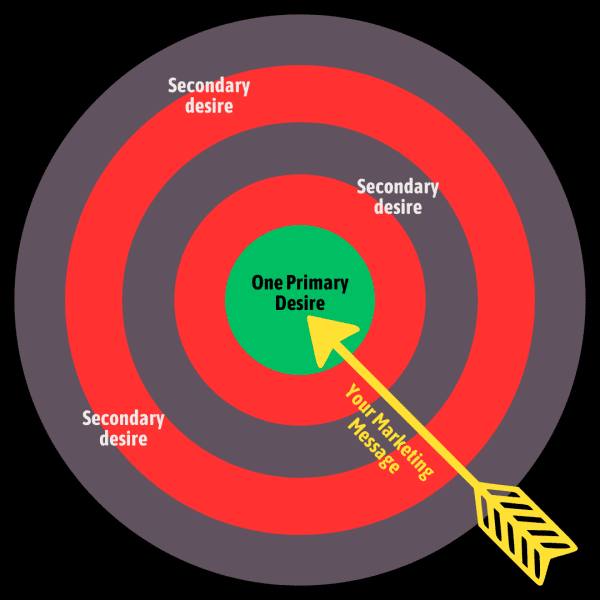
Most businesses talk about too many different customer desires, making their message confusing and watered down. Instead, identify one clear desire of your customer to make sure your message resonates and is quickly understood.
When you try to address too many desires at once, your message can become diluted and less effective. By honing in on a single, clear desire, you make it easier for customers to understand the value you offer. This strategy keeps your message simple and highly engaging, ensuring that it resonates with your audience’s primary needs.
Think about it like aiming for the bullseye on a target. If you scatter your efforts trying to hit multiple points, you may miss the mark entirely. But if you concentrate on hitting the center, you increase your chances of success. For instance, if your business offers a meal planning service, identify the primary desire of your target audience. Is it to save time? Eat healthier? Simplify meal prep? Choose the most pressing desire and build your message around that.
A real-world example of this approach is how Apple markets its products. When the iPod was first introduced, Apple didn’t focus on the technical specifications or the multitude of features. Instead, they focused on one clear desire: the ability to carry “one thousand songs in your pocket.” This simple, targeted message resonated deeply with consumers and contributed to the iPod’s massive success.
Which example best shows focusing on a single customer desire?
"Save money, time, and effort"
"Eat healthier meals"
"Experience luxury and convenience"
"Innovative technology for everyone"
🤔 4. Highlight Problems: Address the customer’s external, internal, and philosophical problems to build a compelling narrative.
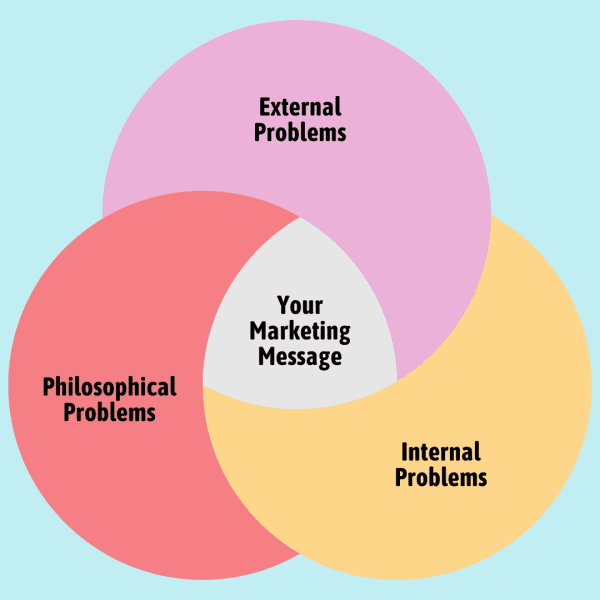
Talking about your customer’s problems is essential for building a compelling brand story. Hearing someone describe our problems creates a deep connection and helps us trust they have the solution. Problems come in 3 dimensions: external, internal, and philosophical.
Every time we buy something, we’re really buying the solution to a problem. We buy a hamburger because we feel hungry, we go see a movie because we feel bored, and we donate to charity because we feel a deeper moral problem.
In marketing, highlighting your customer’s problems is crucial for creating a compelling narrative. These problems can be categorized into three types: external, internal, and philosophical. By addressing all three, you build a deeper connection with your audience and show that you understand their struggles.
- External problems are the tangible, surface-level issues your customers face. For example, someone looking to buy a new car might need a reliable vehicle for their daily commute. This is a straightforward problem that your product or service can solve.
- Internal problems, on the other hand, are the emotional or psychological struggles that stem from the external problem. Using the same car example, the internal problem might be the anxiety and stress a customer feels about their current unreliable car breaking down. Addressing these internal concerns can help build a stronger emotional connection with your audience.
Adding a real-life example, if you buy an iPhone and are worried about dropping it, you can buy an “Apple Care” plan, guaranteeing they will fix the iPhone in case of an accident. - Philosophical problems are the broader, often moral or ethical issues related to the external and internal problems. They touch on why the problem matters in a larger context. In our car example, the philosophical problem could be the belief that everyone deserves reliable transportation. This taps into a deeper sense of justice and fairness.
By addressing all three types of problems in your marketing narrative, you create a more comprehensive and relatable story. For instance, a car dealership could highlight that their cars are reliable (external problem), so they reduce stress and anxiety about breakdowns (internal problem) and support the idea that reliable transportation should be accessible to everyone (philosophical problem).
Feeling stressed about managing work and family responsibilities is an example of what kind of problem?
Financial problem
Philosophical problem
Internal problem
External problem
🚀 5. Bold Call to Action: Use direct and transitional calls to action to prompt customers to take the next step.
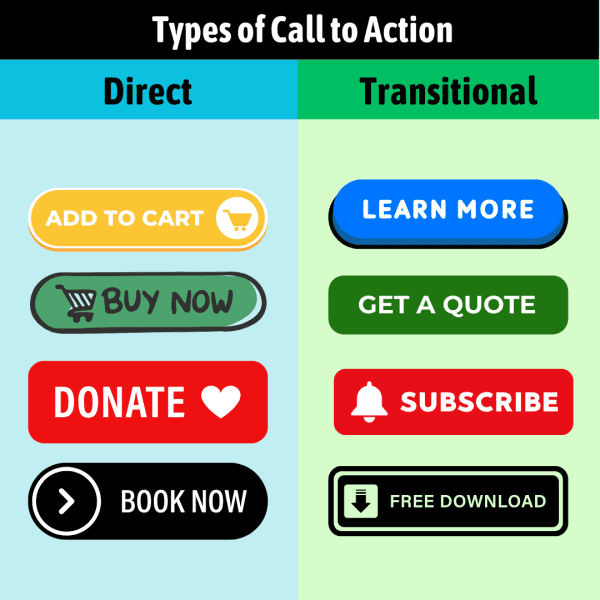
A bold call to action (CTA) is essential to prompt customers to take the next step. Direct CTAs tell customers to purchase now. Transitional CTAs guide customers a step further in their buying journey.
Most business owners are scared of appearing too pushy. We don’t want to look like a sleazy infomercial guy, telling people to “buy now, buy now, don’t wait!” But in truth, most of us are way too hesitant to lead the customer in the right direction. We assume they can figure out what to do next, which leads to confusion and inaction.
In marketing, a bold call to action (CTA) is crucial for encouraging customers to take the next step. Whether it’s making a purchase, signing up for a newsletter, or requesting more information, the right CTA can significantly increase customer engagement and conversion rates.
There are two main types of CTAs: direct and transitional.
- Direct CTAs encourage immediate action. For example, a button that says “Buy Now” or “Sign Up Today” is a direct CTA. These are most effective when the customer is ready to make a decision and take immediate action. Imagine visiting an online store and seeing a product you like. A prominent “Add to Cart” button gives you a clear and direct way to proceed with your purchase.
- Transitional CTAs, on the other hand, guide customers who are not yet ready to make a commitment. These CTAs offer a lower-stakes action that helps build trust and provide additional information. Examples include “Learn More,” “Get a Free Sample,” or “Download Our Free Guide.” These options allow customers to engage with your brand without feeling pressured. For instance, a skincare brand might offer a “Get a Free Sample” button to let potential customers try their products before committing to a full purchase.
Using a combination of direct and transitional CTAs ensures that you cater to customers at different stages of their decision-making process. For example, a software company might have a “Start Free Trial” button (direct CTA) for those ready to try the product immediately, alongside a “Watch Demo” button (transitional CTA) for those who need more information.
Digital marketer Russell Brunson built ClickFunnels, a software company with over 100,000 paying members. ClickFunnels helps entrepreneurs create marketing funnels. A marketing or sales funnel is a sequence of pages that take your website visitor on a guided journey through the buying process. Each page in a funnel has a clear goal, like collecting an email or making a sale.
For example, a page offering a free report might feature just a headline, a visual of the report, a few reviews, and an email signup form. In his book DotCom Secrets, Brunson explains this ultra-minimalist approach greatly increases the conversion rates from visitor to buyer, because “One of the fundamental rules of marketing is that ‘A confused mind always says no.’“
Which of the following is an example of a bold call to action?
"Check our Facebook"
"Learn about us"
"Read more details"
"Click here to sign up"
⏳ 6. Emphasize Stakes: Clearly communicate what customers stand to lose if they don’t use your product or service.
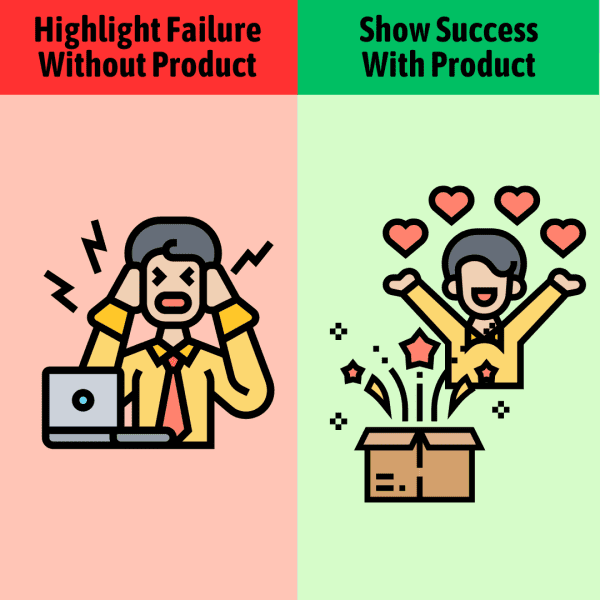
Emphasizing the stakes involves clearly communicating what customers stand to lose if they don’t use your product or service. Highlighting potential negative outcomes creates a sense of urgency and motivates customers to take action.
Think about a health insurance company. Instead of just highlighting the benefits of their coverage, they could emphasize the risks of not having health insurance. They might illustrate scenarios where unexpected medical expenses lead to financial ruin or stress. By clearly communicating these stakes, they make a compelling case for why customers need their insurance.
Another example could be a cybersecurity firm. They might highlight the potential consequences of not securing your business data, such as data breaches, financial loss, and damage to reputation. By painting a vivid picture of these risks, the company underscores the importance of their services in protecting the customer from severe negative outcomes.
Emphasizing the stakes in your marketing is crucial for showing customers the potential negative outcomes they might face if they don’t use your product or service. This strategy creates a sense of urgency, making customers more likely to act quickly to avoid these undesirable situations.
This approach taps into a psychological principle known as loss aversion, where people are more motivated to avoid losses than to achieve gains. By emphasizing what’s at stake, you can leverage this natural tendency to drive customers toward your solution. It’s about making the potential losses clear and real, so customers feel a pressing need to act and protect themselves from these risks.
What psychological principle is leveraged when emphasizing the stakes in marketing?
Confirmation bias
Social proof
Loss aversion
Reciprocity
🏆 7. Paint a Picture of Success: Show customers how their lives will improve by using your product, focusing on desirable outcomes.
Painting a picture of success involves showing customers how their lives will improve by using your product, focusing on the desirable outcomes they can achieve. This approach helps customers envision a better future and motivates them to take action.
Consider a fitness program aiming to attract new clients. Instead of just listing the features of their workout plans, they could showcase success stories of clients who have transformed their health and fitness. Imagine seeing a before-and-after photo of a client who lost weight, gained muscle, and now enjoys a more active lifestyle. This visual representation of success makes the benefits tangible and relatable, encouraging potential customers to believe that they, too, can achieve similar results.
Another example could be a financial planning service. They might highlight the journey of a client who went from being stressed about finances to feeling confident and secure about their financial future. By illustrating the steps taken and the eventual success, the company helps potential customers see the value of their services in achieving financial stability and peace of mind.
This approach taps into the human desire for self-improvement and achievement. When customers can see the end result and how their lives will be better, they are more likely to be motivated to engage with your brand. It’s about creating a vision of success that is so compelling that customers can’t help but want to be a part of it.
Using visuals, testimonials, and detailed descriptions, you can effectively paint a picture of success that resonates with your audience. A simple and effective tip: On your website, feature photos of happy customers using your product, rather than just the product itself. This strategy not only highlights the benefits of your product or service but also inspires and encourages customers to take action
Which element best helps customers envision the positive impact of your product?
Testimonials and success stories
Explaining product features
Offering a money-back guarantee
Competitive pricing
- Craft a One-Liner: Summarize your business offer in one sentence. Test it on someone unfamiliar to see if they can understand what you do in 5 seconds.
- Identify Customer Problems: List external, internal, and philosophical problems your customers face. Integrate these into your marketing messages.
- Add Clear CTAs: Ensure every webpage and marketing material has a bold, direct call to action like “Buy Now” or “Learn More.”
- Communicate Stakes: Write down what customers stand to lose without your product. Include this in your marketing to create urgency.
- Showcase Success: Gather testimonials and success stories. Use visuals and quotes to illustrate how your product improves lives.

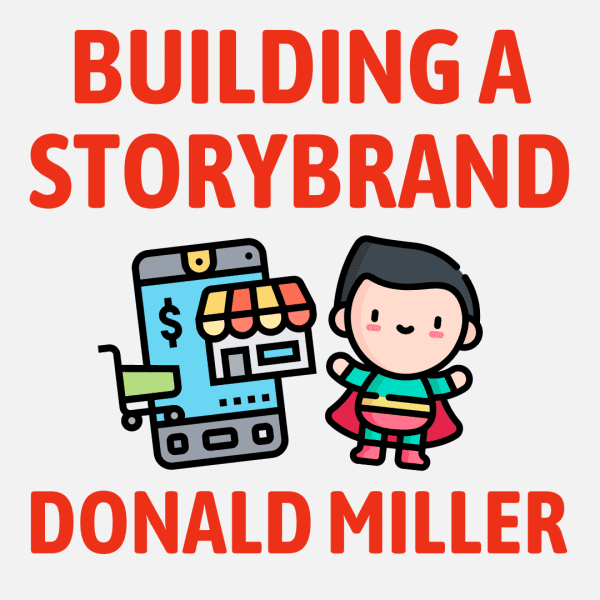











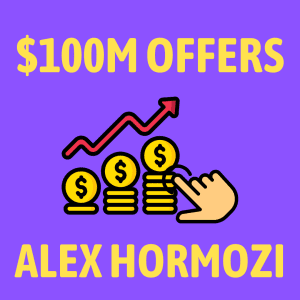

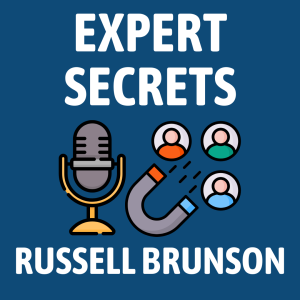















Community Notes